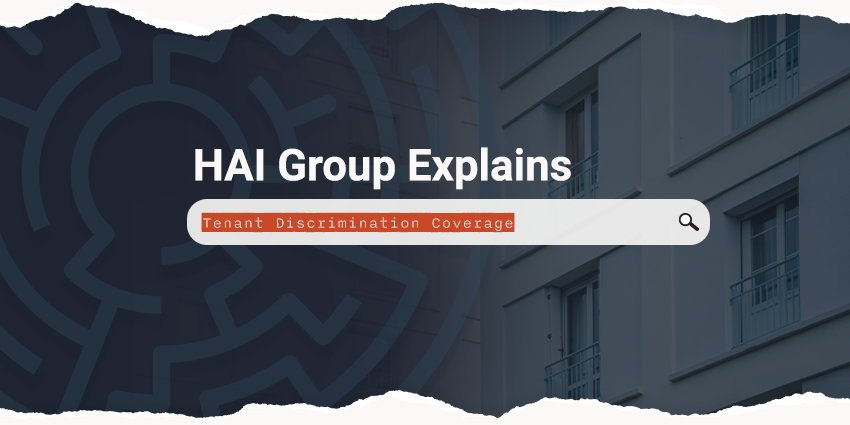Health initiatives are an important strategy for public housing authorities (PHAs) to support residents who wish to age in place, improve their overall health and wellness, manage chronic conditions, and much more.
In 2018, the Public and Affordable Housing Research Corporation (PAHRC) at HAI Group and the Council of Large Public Housing Authorities (CLPHA) surveyed 178 PHAs and found that half reported offering health-related initiatives to residents, often in collaboration with partners. Examples of these initiatives include:
- Bath (ME) Housing’s Comfortably Home helps residents implement cost-effective home modifications to improve mobility and safety.
- Rutland (VT) Housing Authority’s Support and Services at Home (SASH) program aids older adults and people with disabilities in developing a healthy living plan, accessing monthly wellness checks and programs, managing medications, and more.
- Boston (MA) Housing Authority’s building design principles and pest management program help reduce exposure to in-home health triggers.
Do you work for a PHA interested in developing partnerships to improve resident health outcomes? Continue reading for eight critical steps for PHAs to consider, as outlined in “Strategize, Start, and Sustain,” a report jointly published by PAHRC and CLPHA.
Collect feedback from residents
Understanding the needs of your residents is essential to developing programs they will participate in and benefit from. Centering resident feedback can also make these programs more sustainable:
- Survey or informally ask residents and staff to identify needs.
- Check in with property managers and frontline staff for feedback from residents.
- Collaborate with resident advisory boards to promote engagement.
Define internal priorities regarding resident health
Add health initiatives that meet the needs of your residents as goals into your organization’s strategic plan to ensure accountability. When prioritizing steps to implement in your strategic plan:
- Elevate low-hanging fruit to build momentum for health initiatives. Low-resource efforts include on-site vaccination clinics, arranging transit access to health facilities, and on-site educational programming.
- Create a timeline and metrics for evaluating progress toward goals.
- Align goals established in the strategic plan with employee assessment goals.
- Consider communitywide health challenges to inform outreach and programming using tools like the Centers for Disease Control and Prevention’s Local Data for Better Health Tool.
Secure internal buy-in and resources to pursue strategic priorities.
Once leadership has established internal priorities, get staff on board and locate resources to turn your vision into action:
- Delegate or hire a staff member responsible for managing health initiatives and partnerships.
- Elevate staff to the executive management team to ensure these goals have robust attention and resources.
-
Train staff on the new vision and strategic plan to pursue health initiatives.
Cultivate partnerships to expand capacity
Most PHAs depend on partnerships to facilitate health initiatives. Developing partners that align with your organization’s mission can grow the reach of your programs:
- Collaborate with residents to review partners, considering the organization’s relationship to the community, goals, capacity, and expertise.
- Join local committees, boards, and working groups and leverage your staff’s network to develop relationships with potential partners.
- Pitch organizations with shared goals to build a compelling case for partnerships.
- If long-term partnerships are not feasible, consider building momentum for future collaborations by starting with small-scale or one-time programs.
Strengthen and formalize partnerships
Defining what each partner brings to the table through an agreement can ensure the partnership is sustainable, organized, and adequately supported:
- Train staff at both organizations so they understand each other’s industry and structure.
- Create a contingency plan that guides a path forward if staff turnover arises.
- Schedule regular check-ins.
- Clarify each party’s responsibilities to implement or evaluate the program in a memorandum of understanding.
- Share success stories to deepen the partnership and promote long-term sustainability.
- Develop a plan to phase out the initiative if the partnership becomes infeasible or funding ends.
Locate funding to create, sustain, or expand health initiatives
Funding is essential to roll out deeply supportive health programs. Public, private, and philanthropic organizations can be key allies in funding health initiatives:
- Contact your local government to identify tax breaks that your organization can leverage.
- Create an affiliated nonprofit to apply for and receive philanthropic funds for health initiatives.
- Apply for federal grant programs that position your organization to maintain safe and healthy homes for families, such as Resident Opportunities and Self Sufficiency (ROSS), Program of All-Inclusive Care for the Elderly (PACE), Service Coordinators in Multifamily Housing Program, and Choice Neighborhoods Initiative.
- Develop relationships with private foundations and support partners seeking grant funding for services offered at PHA properties.
Evaluate health initiatives
Assessing the impact of health initiatives can build a data-driven case for these partnerships to stimulate long-term investments:
- Collaborate with a local university or nonprofit to expand capacity for program evaluation.
- Collect testimonials from residents and partners about the impact of the initiative.
- Share information on program use and outcomes with the public, funders, and partners as frequently as possible to strengthen the case for the initiative, secure new funding, and expand the partnership.
Refine and reimagine programs
Building health initiatives is an iterative process driven by feedback from partners, residents, and staff:
- Continue to collect feedback from partners, residents, and staff to understand initiative strengths, opportunities for improvement, and gaps.
- Locate additional partnerships that can fill the initiative's needs.
- Prioritize sustainability and capacity to provide services to residents when selecting partners to maintain and expand.
Enhance your skills: Discover additional learning resources from HAI Group
- HAI Group Online Training LeadingAge Housing and Health Care Partnership Toolkit
- How Housing-Health Partnerships Evolve to Help Residents Achieve Successful Outcomes Webinar
- Building PHA Health Initiatives and Cross-Sector Partnerships Webinar
If you are in the process of implementing health programs at your PHA, be sure to contact your account executive for guidance.
The Public and Affordable Housing Research Corporation (PAHRC) is the research entity of HAI Group, an insurer that has been exclusively serving public and affordable housing for more than 35 years. PAHRC’s work focuses on the impact that affordable homes bring to families and communities.
This article is for general information only. HAI Group® makes no representation or warranty about the accuracy or applicability of this information for any particular use or circumstance. Your use of this information is at your own discretion and risk. HAI Group® and any author or contributor identified herein assume no responsibility for your use of this information. You should consult with your attorney or subject matter advisor before adopting any risk management strategy or policy.
HAI Group® is a marketing name used to refer to insurers, a producer, and related service providers affiliated through a common mission, management, and governance. Property-casualty insurance and related services are written or provided by Housing Authority Property Insurance, A Mutual Company; Housing Enterprise Insurance Company, Inc.; Housing Specialty Insurance Company, Inc.; Housing Investment Group, Inc.; and Housing Insurance Services (DBA Housing Insurance Agency Services in NY and MI).

.jpg)




